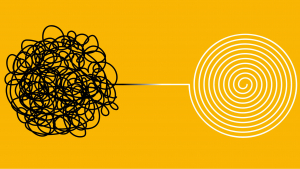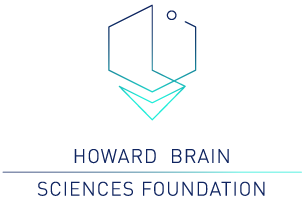In honor of PTSD Awareness Month, the Brain Blog has reviewed the work of Dr. Pradhan and colleagues. TIMBER (Trauma Interventions using Mindfulness Based Extinction and Re-consolidation of memories) psychotherapy is a treatment for PTSD and other disorders that combines Yoga and mindfulness techniques with skills and treatment methods based on cognitive behavioral therapy. You can read our previous articles introducing TIMBER, examining its history and efficacy, and detailing the combination of TIMBER with ketamine infusion treatment on the Brain Blog. For our final week, we will look at the customization and future directions of TIMBER therapy and research.
You can read our previous articles introducing TIMBER, examining its history and efficacy, and detailing the combination of TIMBER with ketamine infusion treatment on the Brain Blog. For our final week, we will look at the customization and future directions of TIMBER therapy and research.
To better customize TIMBER to clients, Pradhan and colleagues offer two novel assessment scales and a meditation practice log. Pradhan and colleagues assert that assessment scales for the trauma that rely only on verbal assessment are “incomplete and inaccurate,” excluding “key processes such as dissociation” (Pradhan, Pinninti & Rathod, 2019). They have designed two assessment scales, the ASMI© (Assessment Scale for Mindfulness Interventions) and the ART-MR© (Arousal Response to Trauma Memory Reactivation) (Pradhan, Pinninti & Rathod, 2019). The ASMI gives a composite measure of the level of mindfulness, whereas as the ART-MR measures the biobehavioral and cognitive-emotional responses during the “controlled reactivation of the trauma memories in the therapy sessions” (Pradhan, Pinninti & Rathod, 2019). After training, both assessments can be performed from home by clients. This data can then be used by the clinician to better tailor interventions to the client’s needs (Pradhan, Pinninti & Rathod, 2019). Pradhan and colleagues advise that none of their three additions “may be a fully adequate measure of the level of mindfulness or trauma” as these are difficult constructions to operationalize (Pradhan, Pinninti & Rathod, 2019).
The ASMI is a “quantitative, self-rated, and experiential scale” that assesses several parameters of meditation, “including seven key dimensions of mindfulness” (Pradhan, Pinninti & Rathod, 2019). The assessment consists of 18 self-report questions with statements the client can agree or disagree with on a scale of 1 to 5. Scores range from 0-90, higher scores indicating increased mindfulness, and can be used to measure mindfulness in a specific instance or compare progress over time. The seven dimensions of mindfulness included are:
(1) compassion toward self, (2) empathy (compassion toward others), (3) level of attention, (4) level of reactivity, (5) mindful observation and interoceptive awareness, (6) awareness and practice of the Middle Way … (7) generalization of one’s various learning experiences into daily life situations.
Pradhan and colleagues recommend the ASMI be administered “at baseline, and after completion of every 5 sessions, until completion of the course of TIMBER therapy (usually 15 sessions including the three booster sessions)” (Pradhan, Pinninti & Rathod, 2019).
As mentioned in the previous week’s article, the ART-MR scale “is a clinician-rated scale that measures the level of biobehavioral and cognitive-emotional arousal responses” and can be used to assess patient arousal without verbal cues (Pradhan, Pinninti & Rathod, 2019). This was designed to help keep the client’s arousal levels “low and controlled during the trauma memory reactivation protocol of TIMBER” (Pradhan, Pinninti & Rathod, 2019). During the review of the client’s custom scripted narrative (one of the steps of TIMBER), the eleven arousal responses are then measured. The eleven measures are, eye response, eyebrows response, pupillary change during arousal, facial muscle tone, facial color response, movement response in various body parts, change in posture, change of breathing, change in heart rate, perspiration, and predominant emotional responses (such as crying or shaking) (Pradhan, Pinninti & Rathod, 2019). To avoid flooding and re-traumatization of the client, these measures are then used in combination with the STOPP (Stress, Three mindful breaths, Observe, Practice more and Proceed) module of TIMBER to lessen arousal (Pradhan, Pinninti & Rathod, 2019).
Lastly, the meditation log measures both durations of the meditation and provides a space for clients to report comments on distractions or difficulties (Pradhan, Pinninti & Rathod, 2019). According to Pradhan and colleagues, the log emphasizes “how to ensure a daily practice meditation in a user-friendly way and how to remove the obstacles to meditation in a systematic and personalized manner” (Pradhan, Pinninti & Rathod, 2019). They have also used this measure to discover “10–15 min practice daily over 6–8 weeks is an optimal duration to elicit long-lasting psychological benefits“ (Pradhan, Pinninti & Rathod, 2019).
The future research regarding TIMBER will consist of proving the efficacy of these measures and designing novel and increasingly effective ways to combine them with TIMBER psychotherapy. Pradhan and colleagues also identify the following needs:
a) to study in more detail the psychometric properties of ASMI and ART-MR Scales,
b) work more on training other healthcare professionals on TIMBER and on biological markers of its response so that it will allow for more generalization as well as prognostication and preemptive treatment planning, respectively.
In an interview with the Brain Blog, Dr. Pradhan mentioned TIMBER’s efficacy is also being researched in Depressive Disorders, Substance Use Disorders, and Anxiety Disorders. Pradhan and colleagues are also researching the use of TIMBER in combination with assessments of biomarkers to better customize the TIMER system to the client’s needs.
For more about TIMBER or its predecessor Y-MBCT, you can view Dr. Pradhan’s lectures online (on TIMBER, on Y-MBCT). Lastly, HBSF’s patient advocacy team can be reached at patientadvocacy@brainsciences.org for additional resources regarding neurodegenerative diseases and other forms of mental illness.
Written by Senia Hardwick
References
Pradhan, B., Pinninti, N. R., & Rathod, S. (2019). Timber psychotherapy: For ptsd, depression and traumatic psychosis. Springer International Publishing. https://doi.org/10.1007/978-3-030-20648-2
